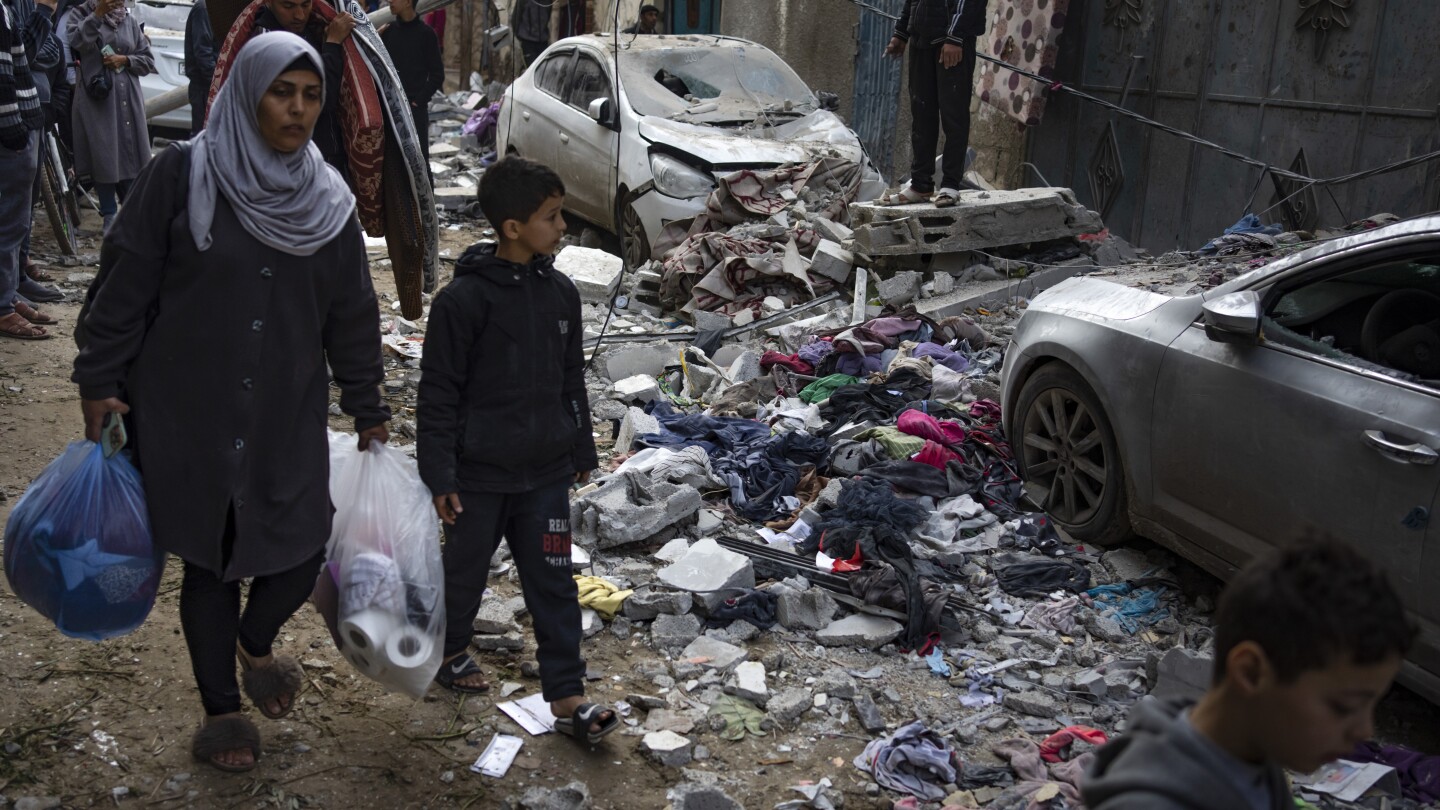Violence has continued this week in the Gaza Strip, as well as across the broader Middle East. The U.S. administration has been pushing for a prolonged cease-fire between Israel and Hamas, but so far has not succeeded. Here’s what you need to know:
ISRAEL SAYS IT WILL FIGHT ON IN GAZA
Israel said Friday it would continue with its invasion of the Gaza Strip and push into the southern town of Rafah to uproot Hamas. More than half of the territory’s 2.3 million people are packed into this city on the border with Egypt, and it’s unclear where they can go. Egypt will not accept displacement of Palestinians on its territory, while much of the rest of the Gaza Strip is already under evacuation orders and is the scene of intense battles between Israel and Hamas.
The situation in Rafah is catastrophic: the town is packed, many people are living in tents, there is not enough food, electricity or water, and Israeli airstrikes kill people almost every day. Twenty-eight people died early Saturday. Close to 28,000 Palestinians have been killed since the conflict erupted, according to the Hamas-run territory’s health ministry.
RIFT BETWEEN ISRAEL AND THE U.S.
Israel’s push for Rafah has widened the gap between it and the United States. The U.S. wants Israel to negotiate a cease-fire with Hamas, which would allow the remaining Israeli hostages to return home and help protect Palestinian civilians in the Gaza Strip. Benjamin Netanyahu, Israel’s prime minister, snubbed Antony Blinken, the U.S. secretary of state, who visited Jerusalem with this message early this week; afterwards, Netanyahu called a press conference and said there would be no cease-fire and Israel would fight on until “total victory”.
President Joe Biden on Thursday called Israel’s approach to the war “over the top” and said that the suffering of civilians has “got to stop.” Since the start of the war, these were perhaps the strongest words of criticism by Biden, who has broadly been supportive of the Israeli effort to destroy Hamas.
Israel launched its assault on the Gaza Strip after Palestinian militants killed 1,200 people in communities across southern Israel and kidnapped 250 on Oct. 7. Just over 100 Israeli hostages were swapped for Palestinian prisoners in a deal last November. About 100 are still held by Hamas; the rest are thought to have perished.
THE REGION REMAINS ON EDGE
The broader Middle East remains on edge as violence has also continued between the U.S. and armed groups allied with Iran. The U.S. military said on Friday it had launched another round of strikes against the Houthis in Yemen, targeting drone boats and anti-ship cruise missile launchers. The Houthis are an Iran-backed group that controls much of northern Yemen. They have been targeting international shipping in the Red Sea, one of the world’s most important trading arteries, in an effort to put pressure on Israel to stop its campaign in Gaza.
The U.S. and Britain, in turn, have been bombing the Houthis, saying that they are trying to protect freedom of trade and navigation on the high seas. These attacks have so far not succeeded in deterring the Houthis: two more ships were targeted by their missiles on Wednesday.
Separately, a U.S. drone strike killed an Iraqi militia commander in Baghdad on Thursday. The U.S. said that the Kataib Hezbollah commander was responsible for “directly planning and participating in attacks” on American troops in the region. Kataib Hezbollah is one of many militias in Iraq that are backed by Iran’s leaders. They use these armed groups to project power across the region and keep up pressure on their archenemy, Israel, as well as the U.S.
The groups have launched nearly 170 attacks on U.S. forces in Iraq and Syria since the start of the war in Gaza, last week killing three Americans and five Kurdish fighters allied with them. U.S. troops are in these places to contain the Islamic State group, which still has a presence in the deserts of eastern Syria and western Iraq.

